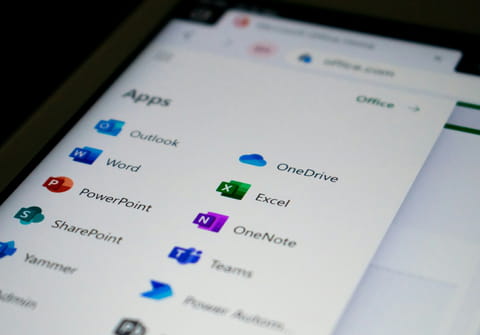Using Word, Excel, and PowerPoint for Free – It's Possible and Perfectly Legal

There is no need to resort to dubious methods to get the famous Microsoft Office applications for free. There is a completely legal way to use Word, Excel, and PowerPoint without spending a cent.
Despite the years and profound developments in computing, Microsoft's Office suite remains one of the most popular and widely used products in the world. Its three flagship applications—Word, Excel, and PowerPoint—are essential tools in the professional sphere and can also be highly useful in a personal setting. However, these software programs are not free, and their cost can quickly become prohibitive for simple or occasional use. To purchase an individual license, you will have to pay nearly $150, and even more for each new major version of the product.
However, there is a completely legal and surprisingly little-known way to use the famous Word, Excel, and PowerPoint applications for free, as well as other Microsoft Office products, such as Forms or Lists.
In response to changing usage patterns and the rise of competing office applications like Google Docs and Sheets, Microsoft has made online versions of some of its Office Suite software available for free. This means you can use Word, Excel, and PowerPoint in your favorite internet browser without spending a cent. To take advantage of this, you simply need to have a Microsoft account, which can be created quickly and for free on the Microsoft website (most Windows users already have one). To access the applications, just go to the Office online page and log in using your Microsoft credentials. Once logged in, you will see a dashboard that allows you to launch and use the Word, Excel, and PowerPoint applications directly within your web browser.
The online versions of the software are very similar to their desktop counterparts. They feature the familiar interface of the Office suite, with the ribbon bringing together various tools available in the form of tabs. If you are used to working with the desktop versions of Word, Excel, and PowerPoint, you won't get lost and will quickly find your bearings. However, some functions are not available in the online versions: for example, in Word, it is not possible to perform a mail merge or add a watermark to the document. Excel does not allow you to create custom cell styles or add calculated fields in pivot tables, and PowerPoint offers fewer transition effects compared to its desktop version.
These restrictions only affect some of the more complex functions, and the range of tools available is sufficient to meet the vast majority of office needs—whether for writing documents with elaborate formatting, analyzing large data sets, or creating sophisticated presentations. Additionally, two lesser-known applications from the Office suite, Forms and Lists, are also available for free. As their names suggest, they allow you to create interactive forms and lists.
Finally, note that to use these applications in your browser, your documents must be stored online using Microsoft's OneDrive service, which provides 5 GB of storage in the free plan. This is more than enough to store a large number of office files.

